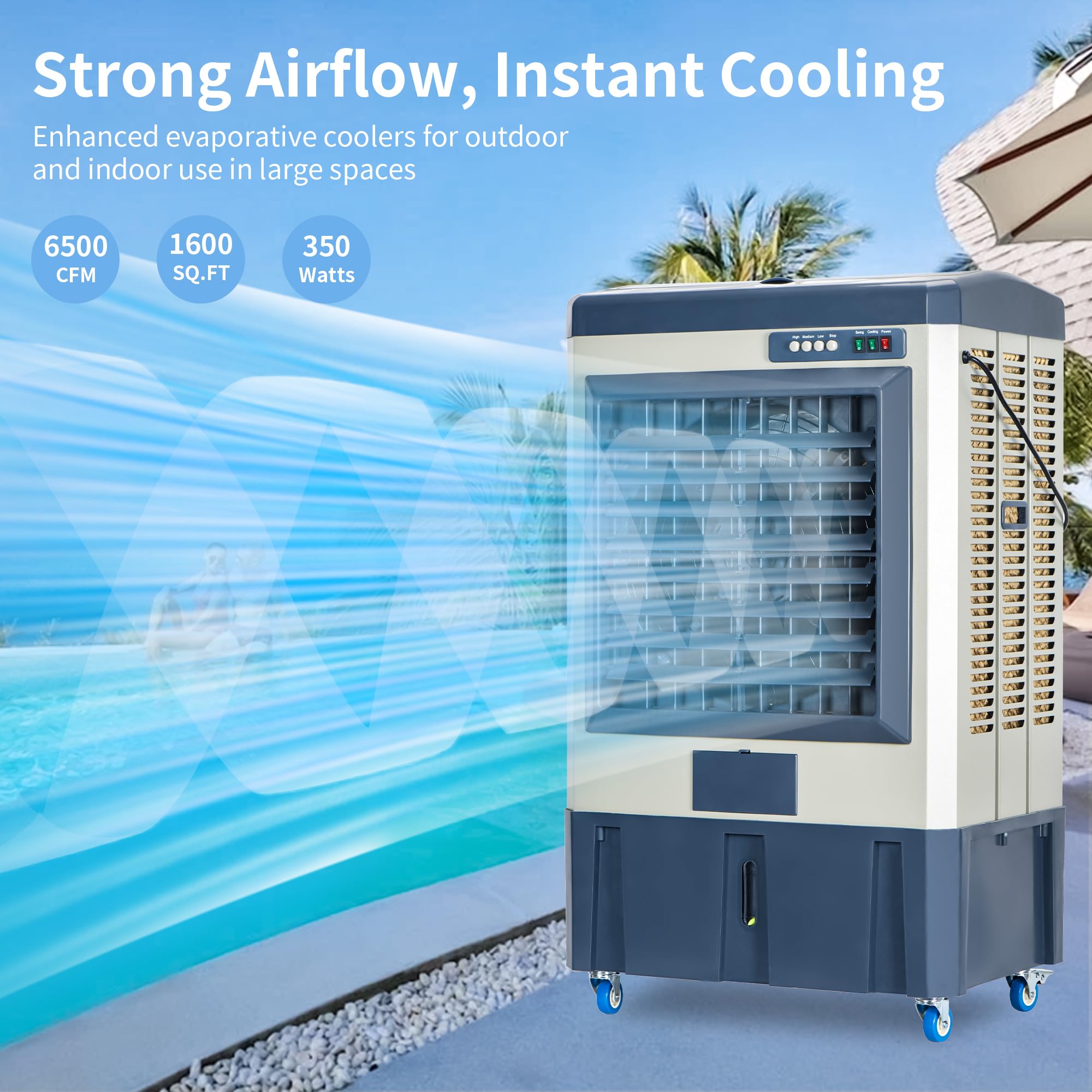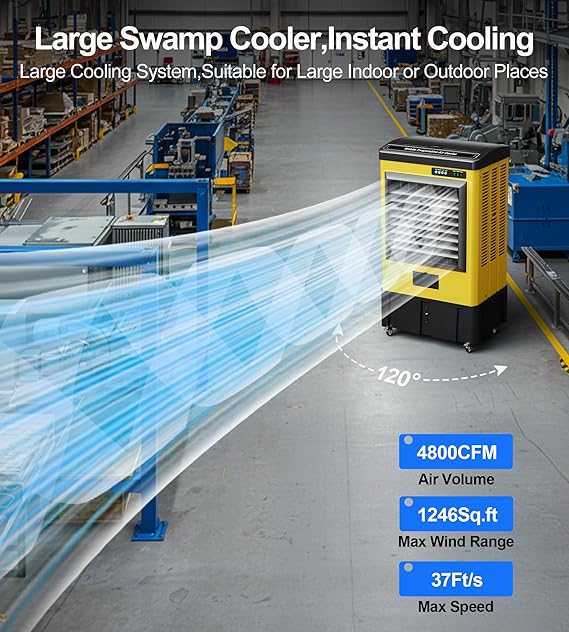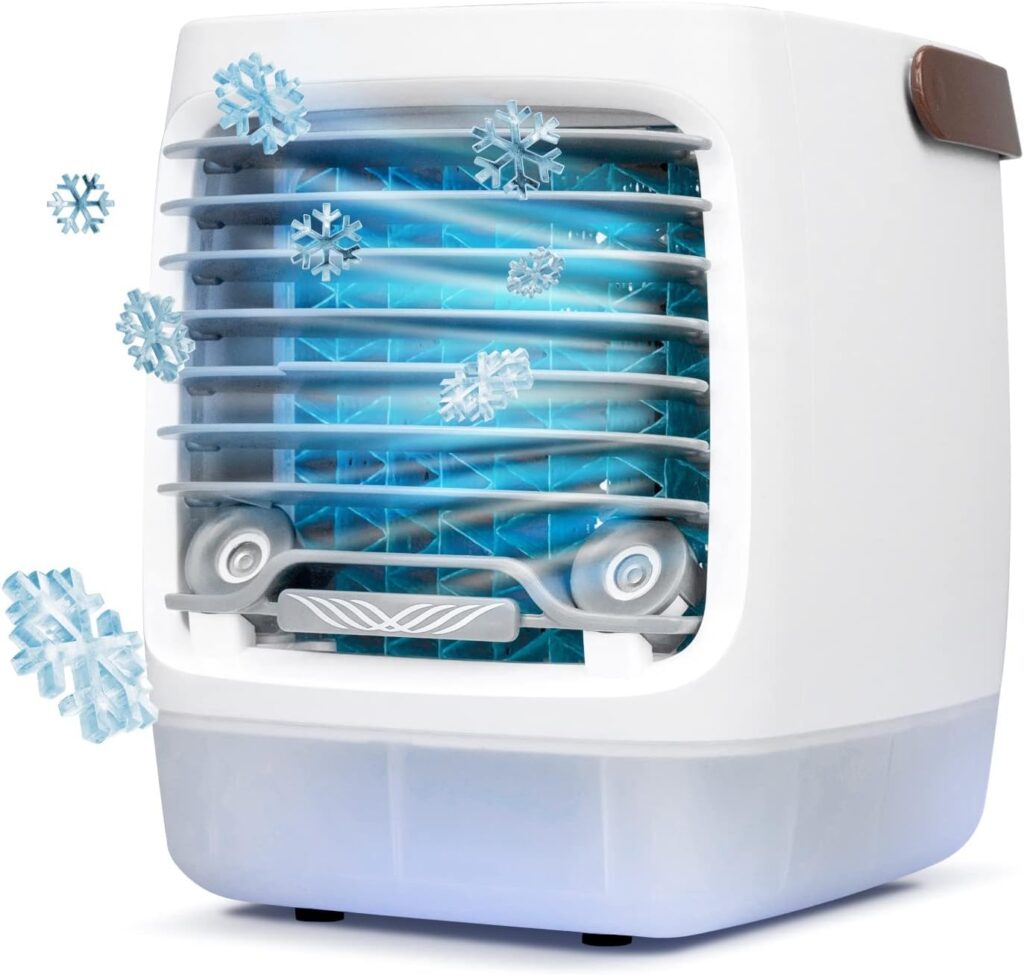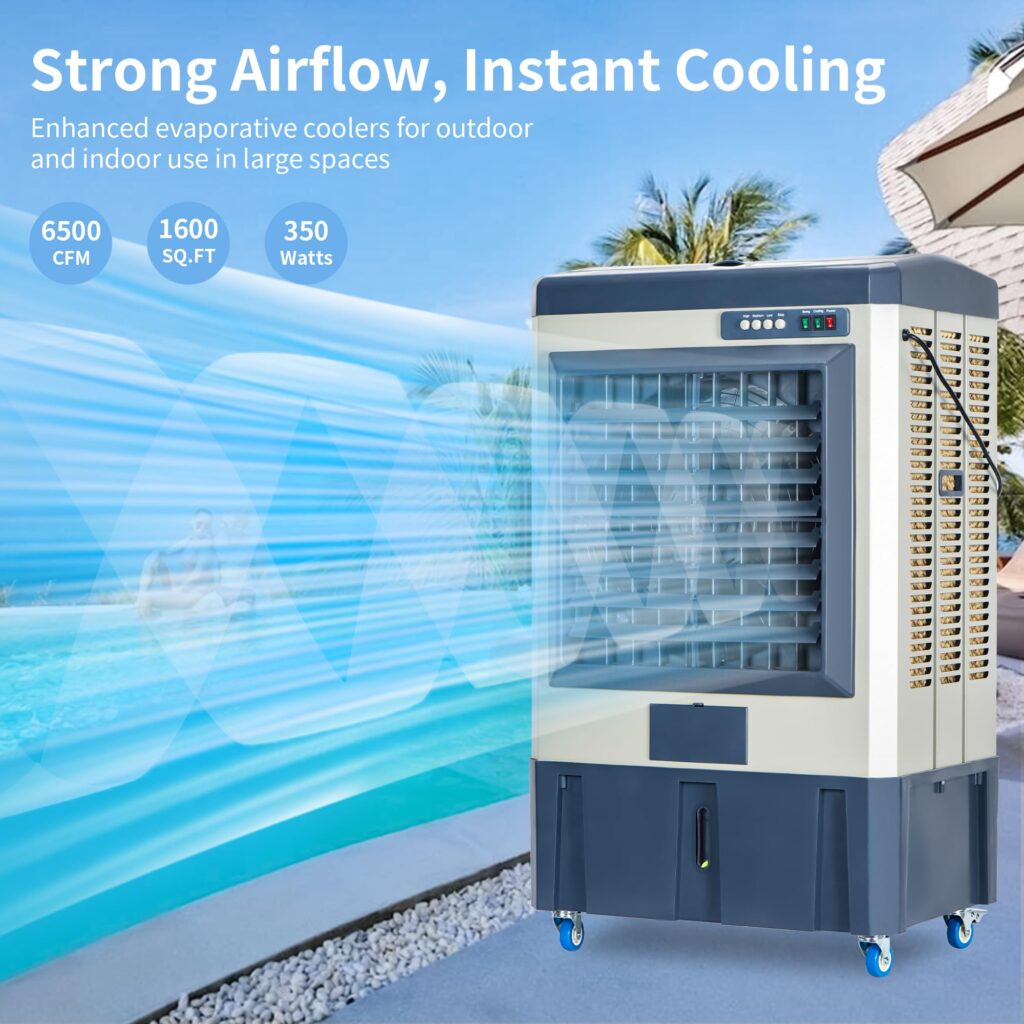Looking for an energy-efficient and eco-friendly way to keep your space cool? An evaporative cooler, also known as a swamp cooler, offers a cost-effective alternative to traditional air conditioning. Using the natural process of water evaporation, these coolers provide refreshing, moist air while consuming significantly less electricity. Ideal for dry and arid climates, they not only cool your surroundings but also improve indoor air quality by adding humidity. In this guide, we’ll explore how evaporative coolers work, their key features, benefits, and maintenance tips to help you choose the best option for your cooling needs.

What is an Evaporative Cooler?
An evaporative cooler, also known as a swamp cooler, is a device that cools air through the evaporation of water. Unlike traditional air conditioners, which use refrigerants and compressors, evaporative coolers rely on a simple and natural process to lower temperatures. By passing warm air through water-soaked cooling pads, the cooler reduces the air temperature and circulates refreshing, moist air throughout the space.
These coolers are particularly effective in dry and arid regions where humidity levels are low. They add moisture to the air while cooling, making them an excellent option for improving indoor comfort in places where traditional air conditioners may dry out the air excessively.
How Does an Evaporative Cooler Work?
Evaporative cooling is based on the principle that water absorbs heat as it evaporates. Here’s how it works:
- Warm air intake: The evaporative cooler pulls in hot, dry air from the surroundings.
- Cooling pad saturation: The air passes through water-saturated cooling pads, which absorb heat and promote evaporation.
- Cooled air circulation: As the air loses heat, it becomes cooler and more humid. A fan then distributes this fresh, cooled air into the room.
Because of this simple mechanism, evaporative coolers consume significantly less electricity compared to traditional air conditioning systems. They are ideal for areas with low humidity, as they work best when air moisture levels are below 50%.
Key Features of an Evaporative Cooler
Energy Efficiency of Evaporative Cooler
Evaporative coolers use up to 75% less energy than traditional air conditioning units. Since they don’t require compressors or refrigerants, they significantly lower energy consumption and electricity costs.
2. Eco-Friendly Operation of Evaporative Cooler
Unlike conventional AC units, evaporative coolers do not use chemical refrigerants that contribute to global warming. They operate purely on water and air, making them an environmentally friendly cooling solution.
3. Improved Air Quality of Evaporative Cooler
By adding moisture to the air, evaporative coolers help prevent dryness, which can cause irritation to the skin, eyes, and respiratory system. They also filter out dust, pollen, and other airborne particles, ensuring cleaner indoor air.
4. Portability and Versatility of Evaporative Cooler
Many evaporative coolers are portable and can be moved from one room to another. Unlike traditional air conditioners that require ductwork or permanent installation, portable swamp coolers offer flexibility in use.
5. Cost-Effective Cooling of Evaporative Cooler
Evaporative coolers have lower upfront costs than traditional AC units and require minimal maintenance. With fewer mechanical components, the chances of system breakdowns are also reduced, leading to long-term savings.

Choosing the Right Evaporative Cooler
Consider Your Climate
Evaporative coolers work best in hot, dry areas. If you live in a region with high humidity, a traditional air conditioner may be a better option.
Determine the Cooling Capacity
Cooling capacity is measured in cubic feet per minute (CFM). A higher CFM means the cooler can cover a larger area. To calculate the required CFM, use this formula:
Room Square Footage x Ceiling Height / 2 = Required CFM
Look for Additional Features of Evaporative Cooler
- Remote Control: Allows easy operation from a distance.
- Multiple Fan Speeds: Provides better control over cooling intensity.
- Water Level Indicator: Helps monitor water levels to prevent dry operation.
- Ice Compartment: Some models come with an ice tray for extra cooling boost.
Energy Efficiency Ratings
Check for models with energy-efficient designs to maximize savings on electricity costs.

Maintenance and Care Tips for Evaporative Coolers
To keep your evaporative cooler in optimal condition, follow these maintenance tips:
- Regularly Clean the Cooling Pads: Dust and minerals can accumulate, reducing efficiency. Cleaning or replacing pads every few months is essential.
- Empty and Refill Water Reservoirs: Prevent stagnant water buildup to avoid bacteria and mold growth.
- Check and Clean the Fan Blades: Dust can settle on fan blades, impacting airflow efficiency.
- Store Properly in Off-Seasons: When not in use, drain the water, clean the unit, and cover it to protect against dust.
FAQs About Evaporative Coolers
Do evaporative coolers really work?
Yes, evaporative coolers are highly effective in dry climates. They use water evaporation to cool the air efficiently while consuming less energy than traditional air conditioning units.
How does the evaporative cooler work?
An evaporative cooler pulls in hot air, passes it through water-soaked pads, and then releases cooled, humidified air into the space.
What is the disadvantage of an evaporative air cooler?
The main disadvantage is that they are less effective in humid climates, as high moisture levels reduce the cooling effect.
Is evaporative cooling better than AC?
It depends on the climate. Evaporative coolers are more energy-efficient and eco-friendly, but air conditioners are better for humid areas.
What are the disadvantages of coolers?
They require regular maintenance, work best in dry climates, and may not provide the same level of cooling as an AC.
Is evaporative cooling gas or electric?
Evaporative coolers run on electricity but consume significantly less power than traditional AC units.
Do evaporative coolers cool a room?
Yes, they can effectively cool a room, especially when used in the right climate conditions.
Does evaporative cooling need windows open?
Yes, opening windows helps improve airflow and allows hot air to escape, enhancing the cooling efficiency.
What is an example of evaporative cooling?
Sweating is a natural example—when sweat evaporates from the skin, it cools the body.
How to cool a room without AC?
Using an evaporative cooler, improving ventilation, using fans, and blocking direct sunlight can help cool a room.
Do evaporative coolers work at night?
Yes, they work at night, but efficiency may decrease if humidity rises.
Can an air cooler replace an AC?
In dry climates, an evaporative cooler can be an effective alternative to an air conditioner, but in humid areas, an AC is more effective.


